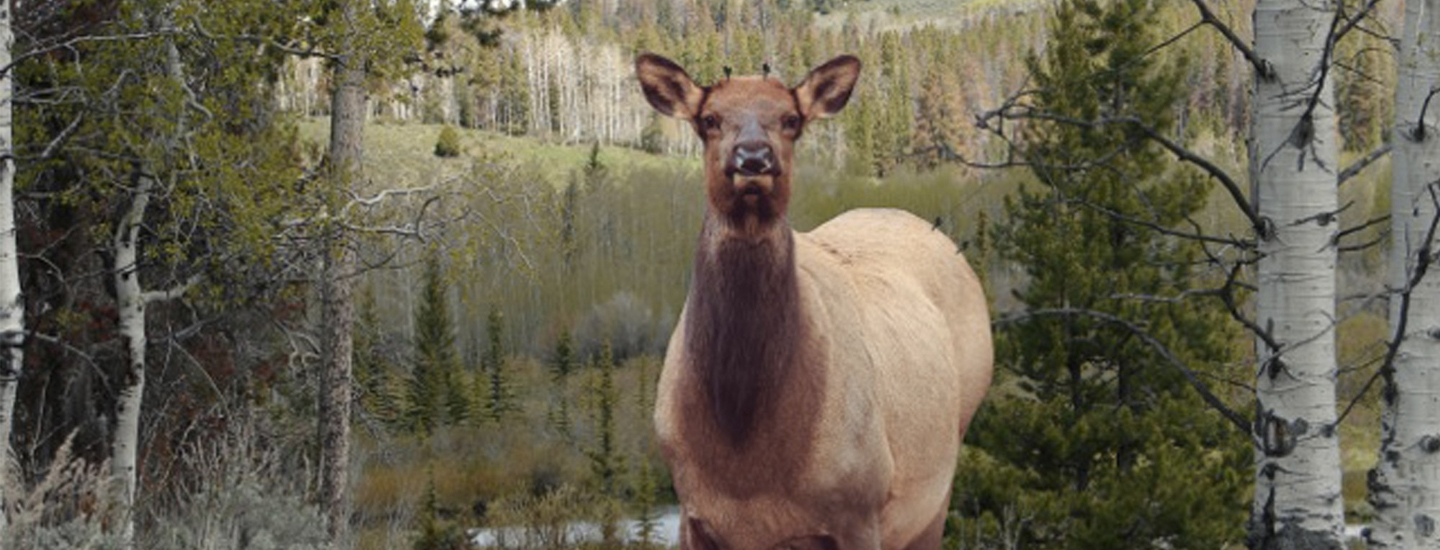Jun 18, 2019
CALLING AND DECOYING ELK IN TIMBER
The bow season for elk generally begins September 1. It’s the pre rut, and most bulls are rubbing the velvet off of their hardening horns if they haven’t done so already. They’re also thinking about cows, plural. As the bachelor herds begin breaking up in exchange for as many of the opposite sex as they can gather, a bull will be ready to fiercely guard his harem once it is formed.
During this time of year, elk are sticking to the coolness of shadows and dark timber as much as possible. They’re feeding mostly at night and visiting watering holes during the day when they do move. Vocalization increases though bulls are more receptive to cow calls rather than bugles in the early season. It’s time to take advantage of the testosterone levels that are rising at a quick beat. An elk’s behavior depends on several factors, including temperature, food availability, hunting pressure and of course the phase of the rut they’re in. If it’s a pre rut, early season hunt you’re going on, plan on calling and decoying elk in the timber where they’ll likely be spending most of their days.
The Cow Call
You should have a cow call in your pack at all times. Even if a bull is satisfied with his harem, a cow call can also be used to at least locate a herd or stop a bull when you’re ready to shoot. Stopping him in the right shooting lane while hunting the thick timber is crucial to making a lethal shot.
The Calf Call
Much like whitetail does, cow elk will respond to the bleating of a lost calf. Once a bull has his harem fleshed out to a dozen or so lady friends, he’s not as likely to respond to your calling. While he may bugle from time to time, the chances of separating him from the herd is unlikely. Playing the part of the calf, there is a good chance the cows’ curiosity will get the best of them and they’ll come looking. Not wanting to let his harem get separated, the bull will follow. If you hear the cows coming closer, get ready as the bull is probably close behind.
Don’t Panic
Ever hunted turkey in the fall? Or busted up a covey of quail? Then did you notice what they started doing? That’s right. They began calling to each other in order to regroup. Elk are the same way.
If you accidentally walk into the middle of a herd, don’t try to immediately go after them. Let the woods quiet down. Softly begin cow calling. Being natural herd (social) animals, the rest are going to look for the separated cow. This is not something that will happen in minutes. It could take hours, so exude patience.

Increase your chances of calling and decoying elk in the timber by utilizing an ultra-real, easy-to-carry cow elk decoy. The Eichler Elk or RMEF Cow Elk decoys are great throughout the season. Weighing only 2lbs. 10ozs., this photo-realistic decoy opens up to create a 48- by 50-inch portable hunting blind that is ideal for the forest, scrub brush or open country of the West.
Or, on the lighter side the Elk Rump weighs next to nothing and can easily stay in your pack year-round. It folds down to a 12-inch disc yet stands 48 inches tall when opened.
As with most animals, the use of decoys and calls are implemented to help. However, if overused, they can certainly disway an elk from coming into bow range. Nobody ever said it was easy, but if you can use the tools to increase the chances of eating delicious elk meat for the next year, then why not?
